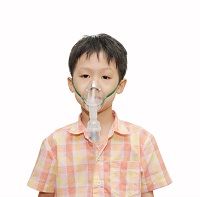Article
Causes of COPD Present in Adolescence
Author(s):
Chronic obstructive pulmonary disease (COPD) risks may already occur in adolescence, according to findings published in The New England Journal of Medicine.

Chronic obstructive pulmonary disease (COPD) risks may already occur in adolescence, according to findings published in The New England Journal of Medicine.
Researchers from the University of Copenhagen examined 657 patients in order to determine when symptoms of COPD, specifically in forced expiratory volume in 1 second (FEV 1) occur. The patients were separated into three categories, based on lung function (FEV 1 less than 80 percent or greater than 80 percent of the predicted value) at cohort inception (the mean age of the patients, which was approximately 40 years), and the patients’ COPD status at the last study visit. The researchers then evaluated the patients’ rate of decline in FEV 1 over the study duration according to their FEV 1 status compared to cohort inception and their ending COPD status.
The researchers followed up with the study cohort after an average period of about 25 years. The patients included in the study had an FEV 1 of less than 80 percent of the predicted value before they were 40 years old. Of those patients, about a quarter had COPD after 22 years of observation. This is compared to 2,207 patients who had a baseline FEV 1 of at least 80 percent of the predicted value before age 40 years, of which only 7 percent had COPD after 22 years of observation.
Previous, research has indicated that all COPD patients experienced accelerated reduced lung function, which the researchers believe is the reason behind so many studies focusing on the decline. The researchers added that this research indicates that this is the case for only about half of all COPD patients. The other half of COPD patients develops the disease with normal lung function decline, the researchers continued.
“This long term chronic disease can be developed in different ways, so achieving normal growth in lung function in early adulthood is an important factor in terms of future risk,” study author Peter Lange said in a press release. “Thus, every effort should be undertaken to achieve normal growth of lung function including not smoking during teenage years, treatment of asthma in childhood and reducing exposure to agents such as passive smoking.”
In the long term, the investigators hope that these findings lend themselves to a better understanding of the development of COPD. They hope that their findings could play a role in preventing new COPD cases.
“Low FEV 1 in early adulthood is important in the genesis of COPD,” the authors concluded. “Accelerated decline in FEV 1 is not an obligate feature of COPD.”




